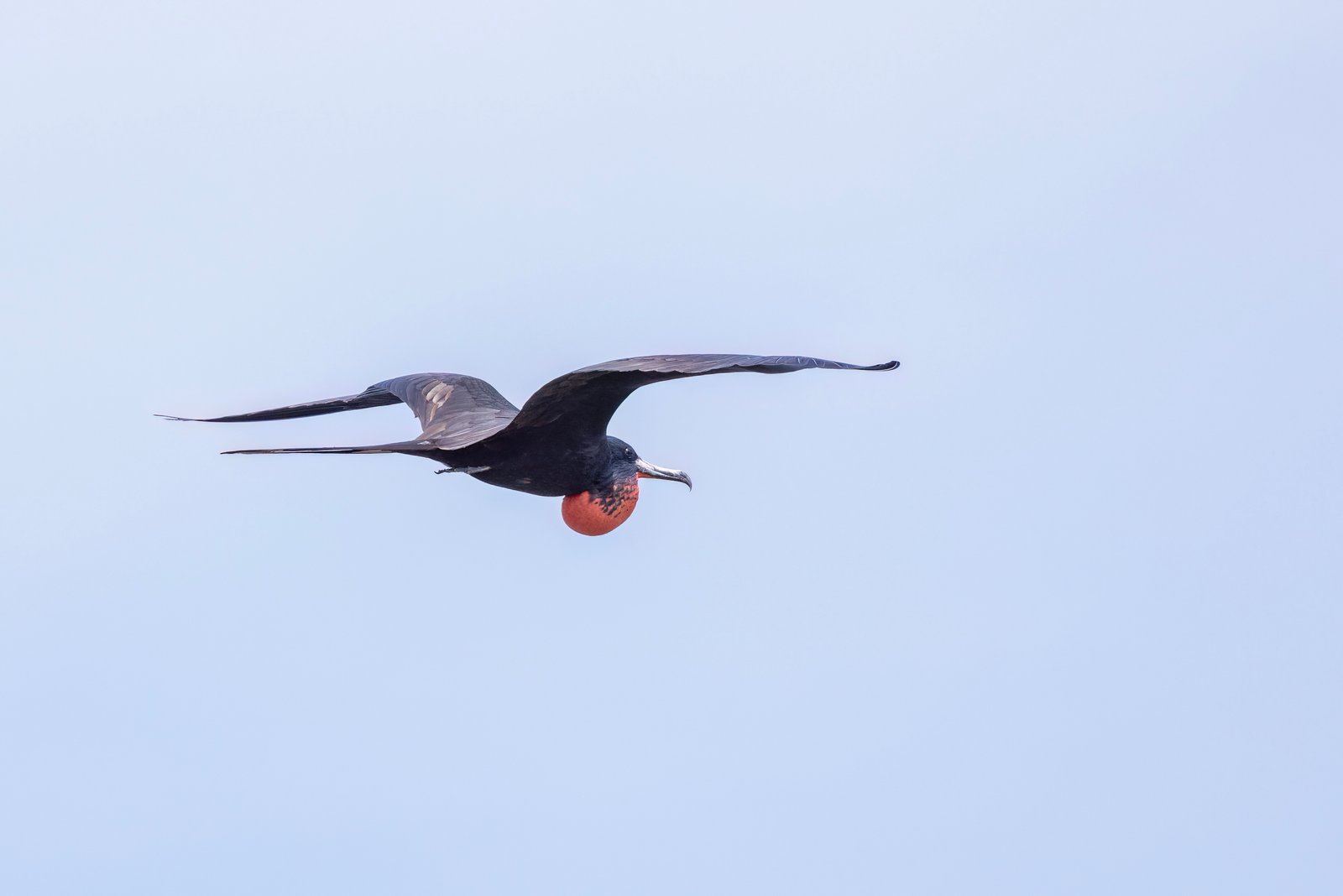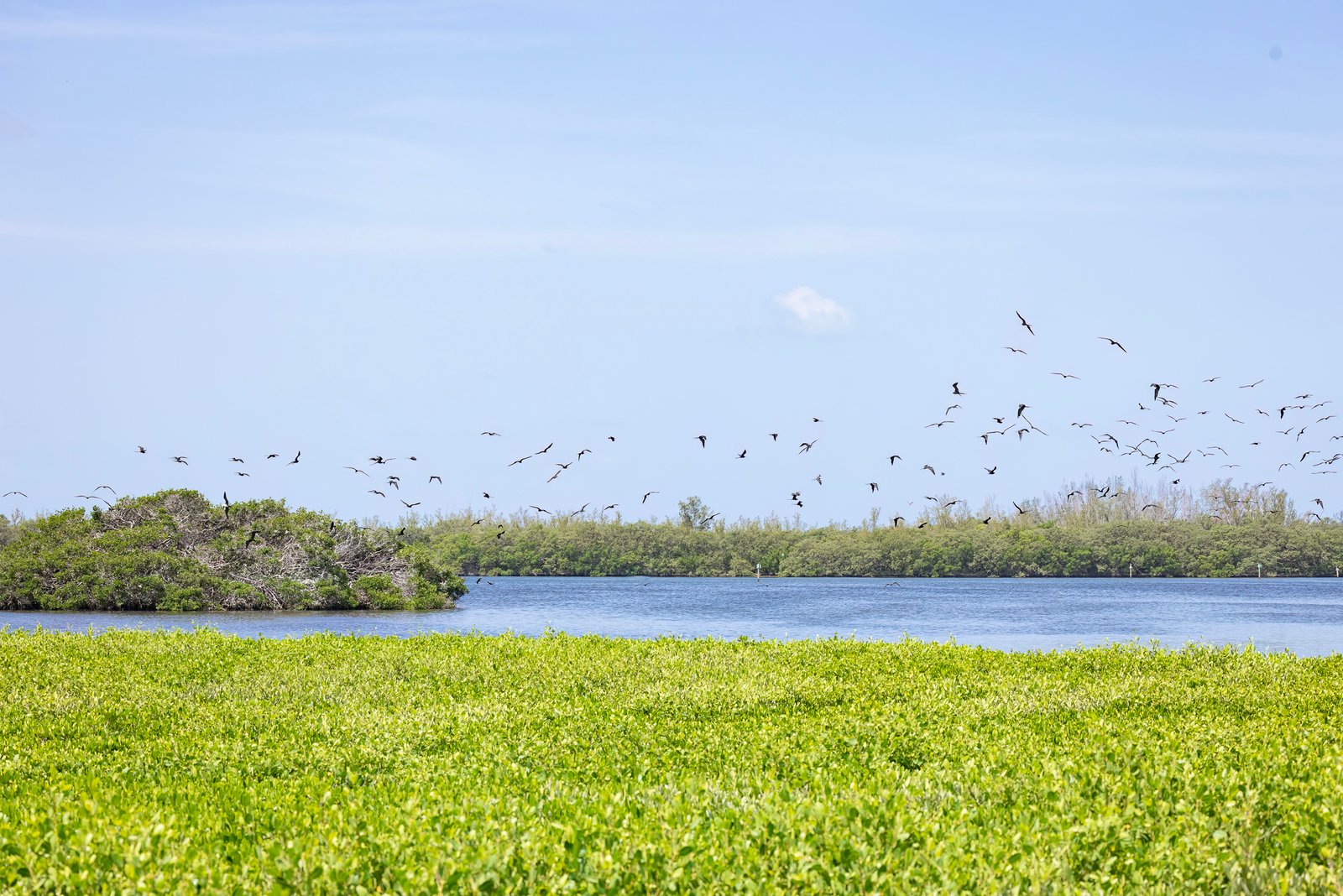This week we took a little trip out to the village of Cortez, which is located on the shores of Sarasota Bay where it empties into the Gulf of America. Cortez is known for its commercial fishing fleets. There are still places to go to get fresh shrimp and several kinds of fish caught daily.
But our visit wasn’t for seafood, it was to try and find a group of nesting Magnificent Frigatebirds. We got a tip that there were large numbers of them seen in Cortez. They are found along the coast in the southern United States, most commonly in Florida, and Mexico, and the Caribbean.
Magnificent Frigatebirds are unique and peculiar. They are large seabirds that appear to be a mix of a few other species. They have the head and bill of a cormorant, the wings of a nighthawk and the split tail of a swallow-tailed kite. They are the only seabirds where the male and female look different. The males are all black and have a bright red pouch on the throat, which they can inflate like a balloon to attract females. The females are bigger than males and have a white chest. Juveniles have varying amounts of white on the head, chest, and belly. They start with a white head and belly and have a pale tan streak on their upper wings. They have the largest wing to body difference of any bird species. They tend to take flight later in the day when winds and thermals are greatest. As a result of their massive wingspan, they can drift on thermal winds for days while barely flapping their wings. Even though they have webbed feet, they rarely land on water because their feathers are not waterproof.

The Magnificent Frigatebird feeding and nesting habits are also unusual. They primarily eat small fish and squid, which they grab from the surface of the water without getting wet. They also eat plankton, crabs, jellyfish, and other items on the surface of the water. They can be a common sight around fishing boats, where they wait for scraps to skim off the surface of the water. Sometimes they will even eat hatchling turtles, young terns and other birds, and eggs. What makes their feeding habits unusual is the way they steal food from other birds. Sometimes Frigatebirds will harass other birds until they regurgitate recently captured food, and then swoop down to steal the meal before it hits the water. Like swallow-tailed kites, they will swoop down and drink from small freshwater ponds and lakes. We were hoping to capture some shots of them swooping to drink but they didn’t cooperate that morning.

However, we were successful in finding a nesting colony. Frigatebirds breed and roost in colonies, with nests often very close together. The female usually builds the nest with materials brought by the male. It’s typically just a simple flimsy platform of sticks. They typically build their nests in mangroves and in low trees and shrubs on islands. In our case, we found their colony on a small island covered with mangroves. What’s unusual about the breeding habits of Frigatebirds is the relationship between parents and their young. They care for their young for up to a year after hatching. This is the most extended parental care cycle in the avian world. Juveniles often don’t leave the nest for 6 months and females will continue to feed them until they are one year old. The parents never leave the nest unguarded until young are half-grown, as other members of colony will eat their eggs or young at an unattended nest. Because of the long breeding cycle, most females likely don’t breed every year.

When the juveniles finally leave the nest, they practice stealing “food” from one another by playing games with sticks. They hold sticks in their mouths and chase each other. When one of them drops the stick, the other dives below to retrieve it. I’ve included some links to articles with more information about these interesting and strange birds.
- https://www.audubon.org/field-guide/bird/magnificent-frigatebird
- https://www.allaboutbirds.org/guide/Magnificent_Frigatebird/overview
- https://en.wikipedia.org/wiki/Frigatebird
A few more pictures from this journey are featured below. For a larger selection of photos, go to the galleries listed.

Leave a Reply